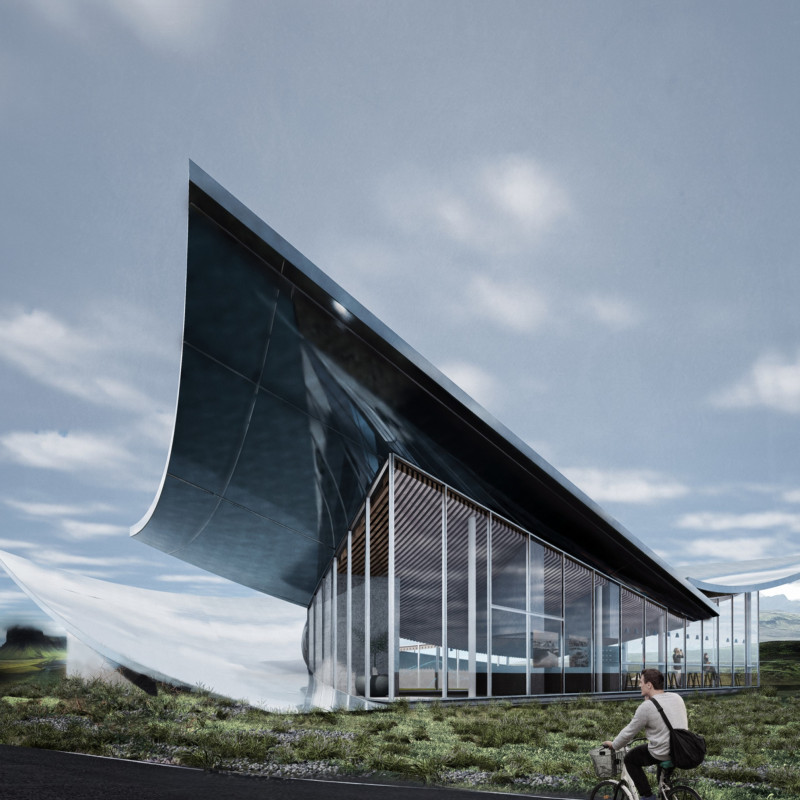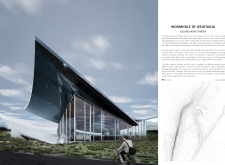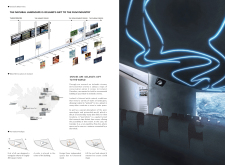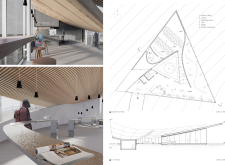5 key facts about this project
The design is located in Iceland and serves as a tribute to the local film industry, reflecting the distinct geographical and cultural context of the area. It emerges from the New Icelandic Wave movement, which began around 2012. The building is conceived not just as a structure, but as a space for engaging cinema experiences. The design integrates symbolic triangles throughout, fostering a sense of continuity that helps guide visitors. This thoughtful approach creates an inviting environment for those who enter.
Geometric Integration
The architecture features a triangular form, which enhances spatial dynamics and encourages movement. This shape not only contributes to the overall aesthetic but also influences how individuals navigate the space. The entrance has a slightly concealed opening, prompting a sense of curiosity and engagement from the moment visitors arrive.
Material Considerations
The exterior is clad in anodized aluminum panels, which provide a modern look and can endure Iceland's rugged climate. This material choice ensures durability while reflecting the nearby icy landscapes, reinforcing the project's connection to its setting. The roof interior is adorned with solid wood strips, adding warmth that balances the cold feel of the exterior. This contrast creates a cozy atmosphere for visitors once they step inside.
Functional Layout
Inside, the design includes a triangular volume measuring around 400 square meters. This space features a central patio that fosters social interaction among visitors. Along with three independent functional areas, the layout accommodates various cinematic activities and experiences. The roof extends outward and is raised, forming a visual statement that invites exploration and access.
Cinematic Essence
The narrative of the design connects closely to the themes in Icelandic cinema. Each film experience is viewed as a brief connection to the Icelandic landscape. This approach likens films to "wormholes," facilitating a dialogue between different realities. The architecture not only honors the art of filmmaking but also reflects the local identity through its spatial arrangement and choice of materials, enhancing the overall cinematic experience.
Light filters through the internal structure, casting gentle shadows on the surfaces. This interaction with light adds a subtle richness to the interior, further enhancing the building's atmospheric quality.






















































